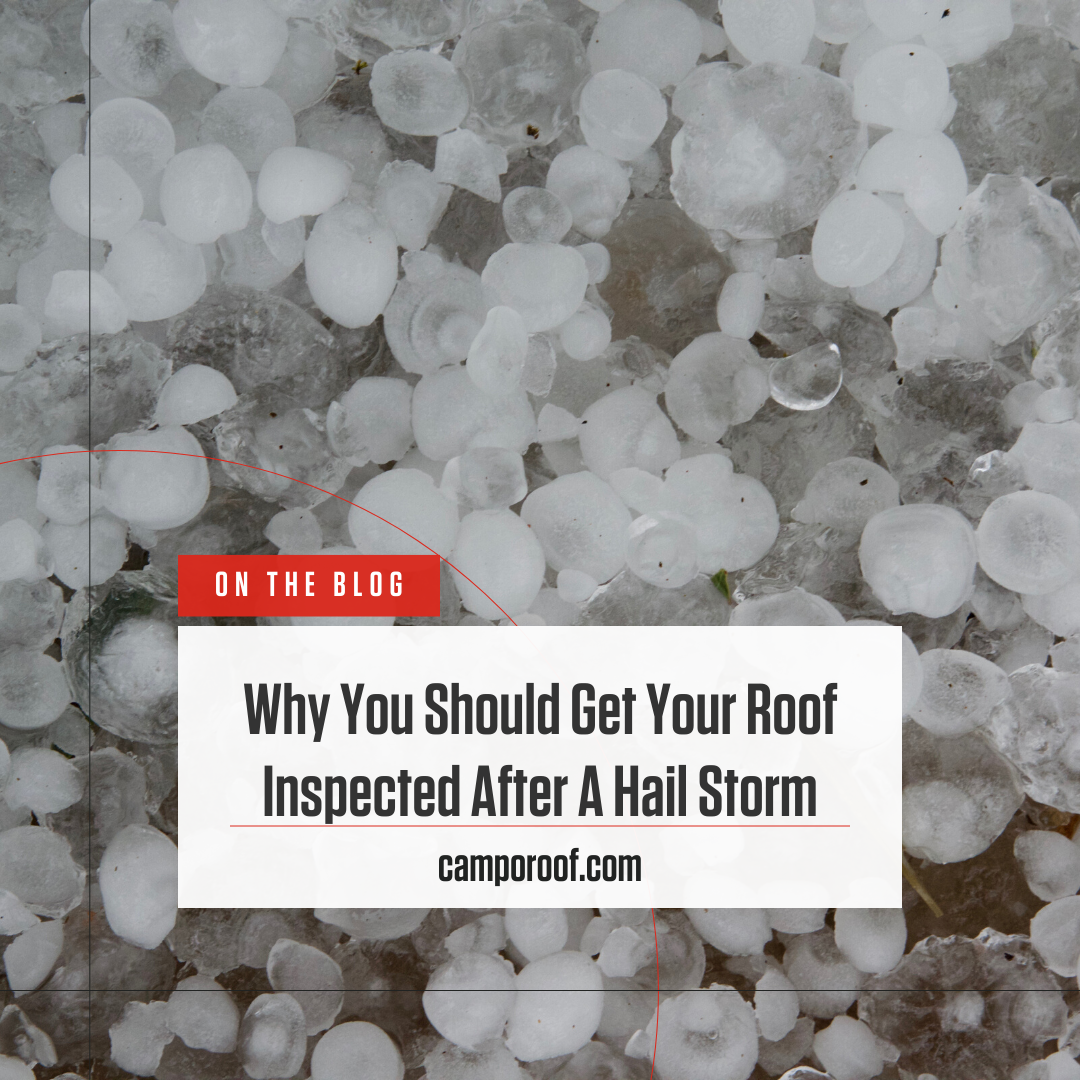
Ever wonder why you should get your roof inspected after a hail storm?
Picture this: The sky roars with hail that could wake even the soundest sleeper. The next morning, your roof wears the aftermath. That’s because hail doesn’t discriminate by roofing material. Whether asphalt shingles or metal panels grace your home, each pelting ice ball can inflict damage—sometimes subtle, sometimes severe. It’s not merely about aesthetics; it’s about safeguarding your home against future weather onslaughts and avoiding sneaky leaks that brew trouble over time.
A professional glance post-storm ensures peace of mind and structural integrity intactness, and that’s where Campo Roofing comes in.
Hail might sound like something magical, but it’s no fairy story when it hits your roof. It starts in thunderstorm clouds, where raindrops get whisked up high enough to freeze. Imagine these ice pellets taking an elevator ride into the sky, getting bigger with every stop as they collide with more water droplets. The result? A hailstone ready to dive bomb.
Now let’s talk about what happens when those icy projectiles meet your roof. Whether you’ve got asphalt roof shingles or metal roofing, hail doesn’t discriminate. Small stones might just leave a dent here and there; however, imagine golf ball-sized hail pelting down at speed—cracks in tiles or splits in wood shakes can spell trouble for your home’s defense against the elements.
Ever wonder if that last storm of hail left a mark on your roof? You’re not alone. Let’s break down how to spot the sneaky signs of storm damage without climbing up there.
No ladder? No problem. Take a walk around your house and keep an eye out for dents on gutters or spatter marks on siding. These are tell-tale signs of hail damage from below.
Catching these clues to hail damage early can save you big time. If something looks off, don’t hesitate to call in a professional to potentially prevent further damage. Remember, your roof is like armor for your home. Let’s keep it strong.
Hail doesn’t just come and go. Its aftermath often imprints itself notably on the very top of your home, leaving silent yet significant scars.
A pro doesn’t just look at your roof; they see into its soul. Okay, maybe that’s a bit much, but they docheck for cracks, splits, or any damage you can’t spot from the ground. Why? To save you from leaks that could turn your living room into an indoor pool.
A skilled inspector does more than glance over shingles; they dive deep to find hidden issues like water damage or weak spots ready to give way during the next storm. Here’s why this matters.
You wouldn’t let just anyone fix your car—so why gamble with your roof? After hail hits hard, get that professional inspection . Your home will thank you.
Hail impact is more than just ice falling from the sky—it can mean chaos for your roof and a need for significant roof repair.
But fear not. Filing an insurance claim doesn’t have to be a headache. Let’s break it down.
First things first, get on the phone with your insurance company. Time is of the essence since most policies limit how long you have to report damage.
Dig into that policy. Know what’s covered and what’s not when it comes to hail damage. Knowing the ins and outs of your policy can shield you from unexpected shocks down the line.
An adjuster will pop by to assess the situation. Be there if you can and show them any damage spots you’ve noticed. They’re helpful in getting your claim rolling smoothly towards repair land.
Finding a reliable roofing contractor feels like trying to pick a needle out of a haystack, right? But it doesn’t have to be like that. Let’s break down how you can vet potential contractors and understand those pesky replacement costs.
Start by doing your homework. Look up local roofing contractors with solid reviews and check if they’re licensed. Inquire about their proficiency and background in fixing and swapping out roofs. Oh, and make sure you don’t skip over getting some references from them.
The cost puzzle can be tricky but think about factors like damage extent, roofing material, and the size of your roof. Insurance might cover some costs, so definitely check that out.
Picking the right contractor is crucial. It’s not just about fixing leaks; it’s peace of mind knowing you’ve made the smart choice.
A routine check catches minor issues before they turn into wallet-draining repairs, keeping your home safe and sound.
Hail can crack shingles, lead to leaks, and reduce your roof’s lifespan. It hits hard on both appearance and function.
Look for dents in metal parts, cracks in shingles, or granules filling the gutters. These signs scream hail damage.
Hail leaves behind distinct dimples on shingles and may cause splits in wood shakes. Metal roofs show visible dents.
So, we’ve journeyed through the tempest and emerged wiser on why you should get your roof inspected after a storm of hail.
It’s not merely a suggestion; it feels like unearthing an old manuscript that shields you from impending disasters.
But here’s where it gets good. Armed with ladders and wisdom, professional inspectors become our unsung heroes—turning potential despair into tales of resilience. They spot what we can’t, saving us from the silent havoc brewing overhead.
The truth is simple yet profound: Your roof deserves more than a cursory glance after hail storms hit. It demands respect—a thorough check-up to continue standing guard over your dreams and nightly slumber.
And that’s your answer to “Why you should get your roof inspected after a hail storm?”
Think you might have storm damage to your roof? Trust the Storm Damage Experts at Campo Roof and get it checked out today.
Looking to start a home exterior project? Let us know and start the conversation


